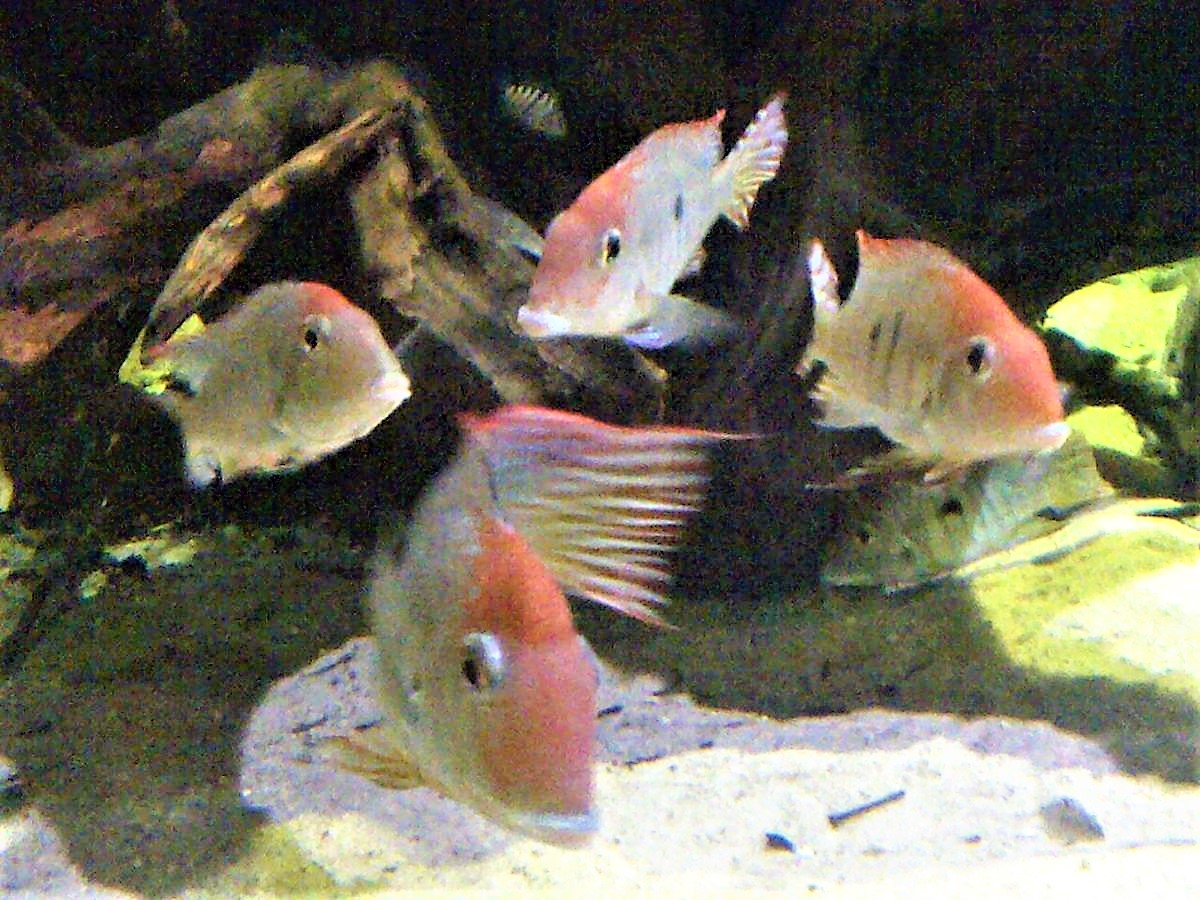|
Scobinancistrus Pariolispos
''Scobinancistrus pariolispos'' is a species of catfish in the family Loricariidae. It is native to South America, where it occurs in the Tapajós and Tocantins River basins in Brazil. The species reaches 27 cm (10.6 inches) in total length. ''S. pariolispos'' appears in the aquarium trade, where it is typically referred to either as the golden cloud pleco or by its associated L-number The L-number system is a semi-scientific classification system of catfish based on photographs of shipments of tropical catfish of the family Loricariidae published by the German aquarium magazine DATZ (Die Aquarien- und Terrarienzeitschrift (The ..., which is L-048. References {{Taxonbar, from=Q6414058 Fish described in 1989 Loricariidae ... [...More Info...] [...Related Items...] OR: [Wikipedia] [Google] [Baidu] |
Species
In biology, a species is the basic unit of Taxonomy (biology), classification and a taxonomic rank of an organism, as well as a unit of biodiversity. A species is often defined as the largest group of organisms in which any two individuals of the appropriate sexes or mating types can reproduction, produce Fertility, fertile offspring, typically by sexual reproduction. Other ways of defining species include their karyotype, DNA sequence, morphology (biology), morphology, behaviour or ecological niche. In addition, paleontologists use the concept of the chronospecies since fossil reproduction cannot be examined. The most recent rigorous estimate for the total number of species of eukaryotes is between 8 and 8.7 million. However, only about 14% of these had been described by 2011. All species (except viruses) are given a binomial nomenclature, two-part name, a "binomial". The first part of a binomial is the genus to which the species belongs. The second part is called the specifi ... [...More Info...] [...Related Items...] OR: [Wikipedia] [Google] [Baidu] |
Catfish
Catfish (or catfishes; order Siluriformes or Nematognathi) are a diverse group of ray-finned fish. Named for their prominent barbels, which resemble a cat's whiskers, catfish range in size and behavior from the three largest species alive, the Mekong giant catfish from Southeast Asia, the wels catfish of Eurasia, and the piraíba of South America, to detritivores (species that eat dead material on the bottom), and even to a tiny parasitic species commonly called the candiru, ''Vandellia cirrhosa''. Neither the armour-plated types nor the naked types have scales. Despite their name, not all catfish have prominent barbels or "whiskers". Members of the Siluriformes order are defined by features of the skull and swimbladder. Catfish are of considerable commercial importance; many of the larger species are farmed or fished for food. Many of the smaller species, particularly the genus '' Corydoras'', are important in the aquarium hobby. Many catfish are nocturnal, [...More Info...] [...Related Items...] OR: [Wikipedia] [Google] [Baidu] |
Loricariidae
The Loricariidae is the largest family of catfish (order Siluriformes), with 92 genera and just over 680 species. Loricariids originate from freshwater habitats of Costa Rica, Panama, and tropical and subtropical South America. These fish are noted for the bony plates covering their bodies and their suckermouths. Several genera are sold as " plecos", notably the suckermouth catfish, '' Hypostomus plecostomus'', and are popular as aquarium fish. Common names Members of the family Loricariidae are commonly referred to as loricariids, suckermouth armoured catfishes, or armoured catfish. The name " plecostomus", and its shortened forms "pleco" and "plec", are used for many Loricariidae, since ''Plecostomus plecostomus'' (now called '' Hypostomus plecostomus'') was one of the first loricariid species imported for the fish-keeping hobby. Some loricariids are not normally considered "plecostomus", such as '' Farlowella'' catfish. In their native range, these fish are known as '' ... [...More Info...] [...Related Items...] OR: [Wikipedia] [Google] [Baidu] |
South America
South America is a continent entirely in the Western Hemisphere and mostly in the Southern Hemisphere, with a relatively small portion in the Northern Hemisphere at the northern tip of the continent. It can also be described as the southern Subregion#Americas, subregion of a single continent called Americas, America. South America is bordered on the west by the Pacific Ocean and on the north and east by the Atlantic Ocean; North America and the Caribbean Sea lie to the northwest. The continent generally includes twelve sovereign states: Argentina, Bolivia, Brazil, Chile, Colombia, Ecuador, Guyana, Paraguay, Peru, Suriname, Uruguay, and Venezuela; two dependent territory, dependent territories: the Falkland Islands and South Georgia and the South Sandwich Islands; and one administrative division, internal territory: French Guiana. In addition, the ABC islands (Leeward Antilles), ABC islands of the Kingdom of the Netherlands, Ascension Island (dependency of Saint Helena, Asce ... [...More Info...] [...Related Items...] OR: [Wikipedia] [Google] [Baidu] |
Tapajós
The Tapajós ( pt, Rio Tapajós ) is a river in Brazil. It runs through the Amazon Rainforest and is a major tributary of the Amazon River. When combined with the Juruena River, the Tapajós is approximately long. It is one of the largest clearwater rivers, accounting for about 6% of the water in the Amazon basin. Course For most of its length the Tapajós runs through Pará State, but the upper (southern) part forms the border between Pará and Amazonas State. The source is at the Juruena– Teles Pires river junction. The Tapajós River basin accounts for 6% of the water in the Amazon Basin, making it the fifth largest in the system.Hales, J., and P. Petry (2013). Tapajos – Juruena'. Freshwater Ecoregions of the World. Retrieved 16 February 2013. From the lower Arinos River (a tributary of Juruena) to the Maranhão Grande falls are a more or less continuous series of formidable cataracts and rapids; but from the Maranhão Grande to the mouth of Tapajós, about , th ... [...More Info...] [...Related Items...] OR: [Wikipedia] [Google] [Baidu] |
Tocantins River
The Tocantins River ( pt, Rio Tocantins, link=no , , Parkatêjê: ''Pyti'' ɨˈti is a river in Brazil, the central fluvial artery of the country. In the Tupi language, its name means "toucan's beak" (''Tukã'' for "toucan" and ''Ti'' for "beak"). It runs from south to north for about 2,450 km. It is not really a branch of the Amazon River, since its waters flow into the Atlantic Ocean alongside those of the Amazon. It flows through four Brazilian states (Goiás, Tocantins, Maranhão and Pará) and gives its name to one of Brazil's newest states, formed in 1988 from what was until then the northern portion of Goiás. The Tocantins is one of the largest clearwater rivers in South America. Course It rises in the mountainous district known as the Pireneus, west of the Federal District, but its western tributary, the Araguaia River, has its extreme southern headwaters on the slopes of the Serra dos Caiapós. The Araguaia flows 1,670 km before its confluence with the To ... [...More Info...] [...Related Items...] OR: [Wikipedia] [Google] [Baidu] |
Brazil
Brazil ( pt, Brasil; ), officially the Federative Republic of Brazil (Portuguese: ), is the largest country in both South America and Latin America. At and with over 217 million people, Brazil is the world's fifth-largest country by area and the seventh most populous. Its capital is Brasília, and its most populous city is São Paulo. The federation is composed of the union of the 26 states and the Federal District. It is the largest country to have Portuguese as an official language and the only one in the Americas; one of the most multicultural and ethnically diverse nations, due to over a century of mass immigration from around the world; and the most populous Roman Catholic-majority country. Bounded by the Atlantic Ocean on the east, Brazil has a coastline of . It borders all other countries and territories in South America except Ecuador and Chile and covers roughly half of the continent's land area. Its Amazon basin includes a vast tropical forest, ho ... [...More Info...] [...Related Items...] OR: [Wikipedia] [Google] [Baidu] |
L-number
The L-number system is a semi-scientific classification system of catfish based on photographs of shipments of tropical catfish of the family Loricariidae published by the German aquarium magazine DATZ (Die Aquarien- und Terrarienzeitschrift (The Aquarium and Terrarium Magazine)). The first L-number was published in 1988. An L-number is not a formal scientific designation, but it allows people to identify various loricariid catfish by a "common name" before the fish is officially described. When a loricariid receives an official scientific name, the L-number (or numbers) is retired; best practice is then to use the scientific name. A specific L-number classification does not guarantee a discrete species, multiple L numbers have been given to different populations of the same species. To add to the confusion, sometimes a single L-number may be used for multiple species. Additionally the aquarium magazine 'Das Aquarium' introduced a similar system using the prefix 'LDA'. L-numbe ... [...More Info...] [...Related Items...] OR: [Wikipedia] [Google] [Baidu] |
Fish Described In 1989
Fish are aquatic, craniate, gill-bearing animals that lack limbs with digits. Included in this definition are the living hagfish, lampreys, and cartilaginous and bony fish as well as various extinct related groups. Approximately 95% of living fish species are ray-finned fish, belonging to the class Actinopterygii, with around 99% of those being teleosts. The earliest organisms that can be classified as fish were soft-bodied chordates that first appeared during the Cambrian period. Although they lacked a true spine, they possessed notochords which allowed them to be more agile than their invertebrate counterparts. Fish would continue to evolve through the Paleozoic era, diversifying into a wide variety of forms. Many fish of the Paleozoic developed external armor that protected them from predators. The first fish with jaws appeared in the Silurian period, after which many (such as sharks) became formidable marine predators rather than just the prey of arthropods ... [...More Info...] [...Related Items...] OR: [Wikipedia] [Google] [Baidu] |





